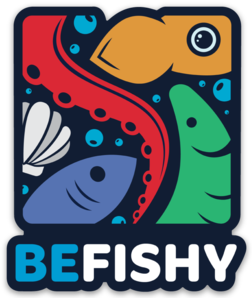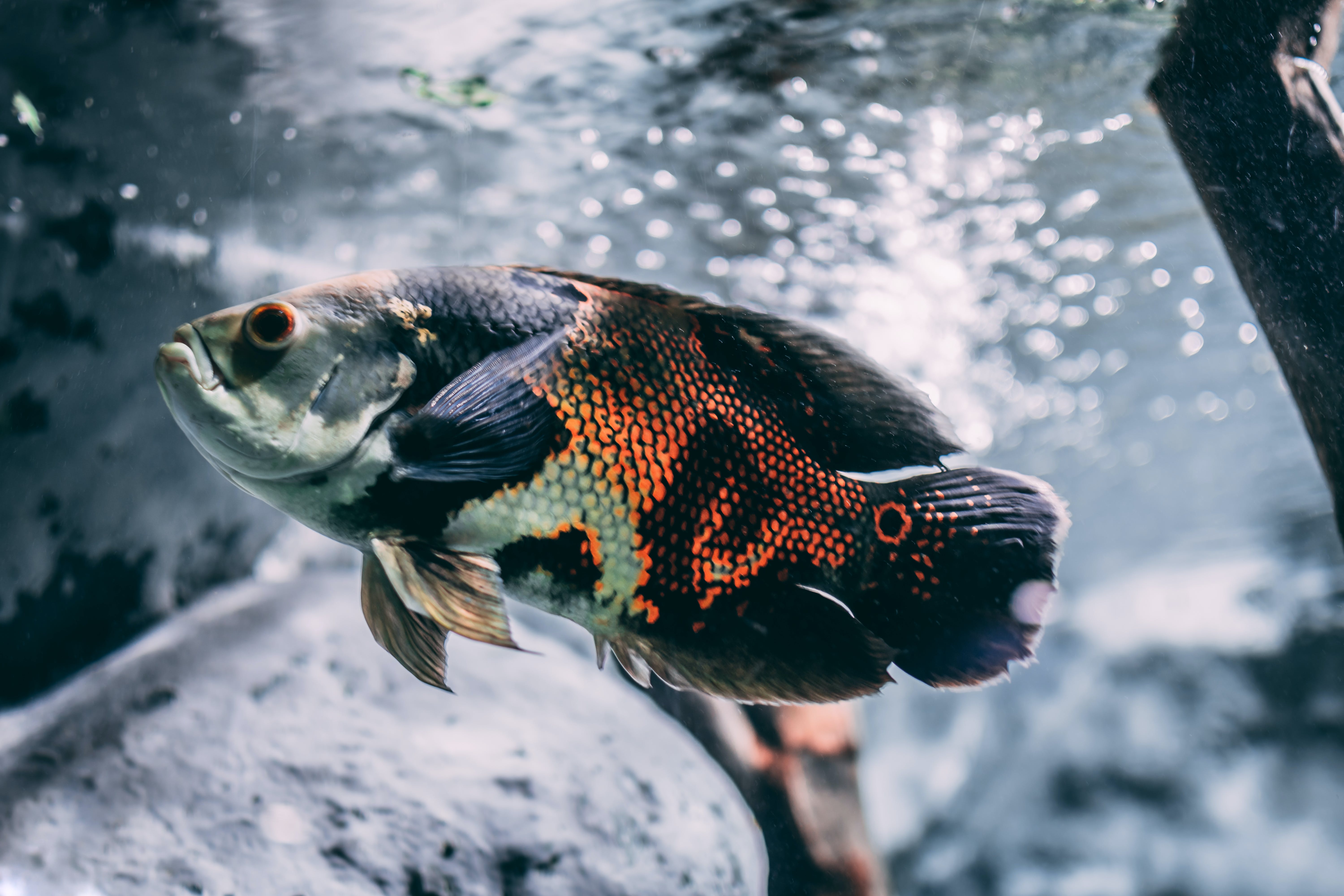Don’t have a soil substrate? No worries! Here are some aquatic plants that can live in your tank, without having a need for soil. Let’s start!
JAVA FERN
Java ferns are one of the most popular aquarium plants in the hobby, and for a good reason! They are beginner-friendly, low light plants, and best of all, do not require any soil!
There are many different varieties or species of java ferns, in which they come in different shapes and sizes. However, common species that are found in the hobby have the same care requirements.
Java fern are relatively slow growing plants and require low to moderate lighting. They benefit greatly from carbon dioxide injection. Nevertheless, it is not required to keep this plant with carbon dioxide in order for it to thrive.

In the wild, java fern grows in the shade. If you do have high or strong lighting in your tank, it is best to keep them in shaded areas. Prolonged exposure to direct strong lighting will cause this plant to “burn” or turn brown.
It is best to keep them at a temperature of 68°F to 82°F.
Java ferns do not like to be buried! Instead of absorbing nutrients through the roots, the roots’ main function is for anchoring. They mainly absorb nutrients through its rhizome and propagate through rhizome division.
ANUBIAS
Anubias also come in different shapes and sizes! There are plenty of beautiful species of anubias available in the hobby, some rarer than others.
Generally, their care requirements are similar to that of java ferns. Anubias has a slow growth rate, and requires low to moderate lighting. Similar to java ferns, anubias do not like strong lighting. So, it is best to place them in shaded areas of your tank.
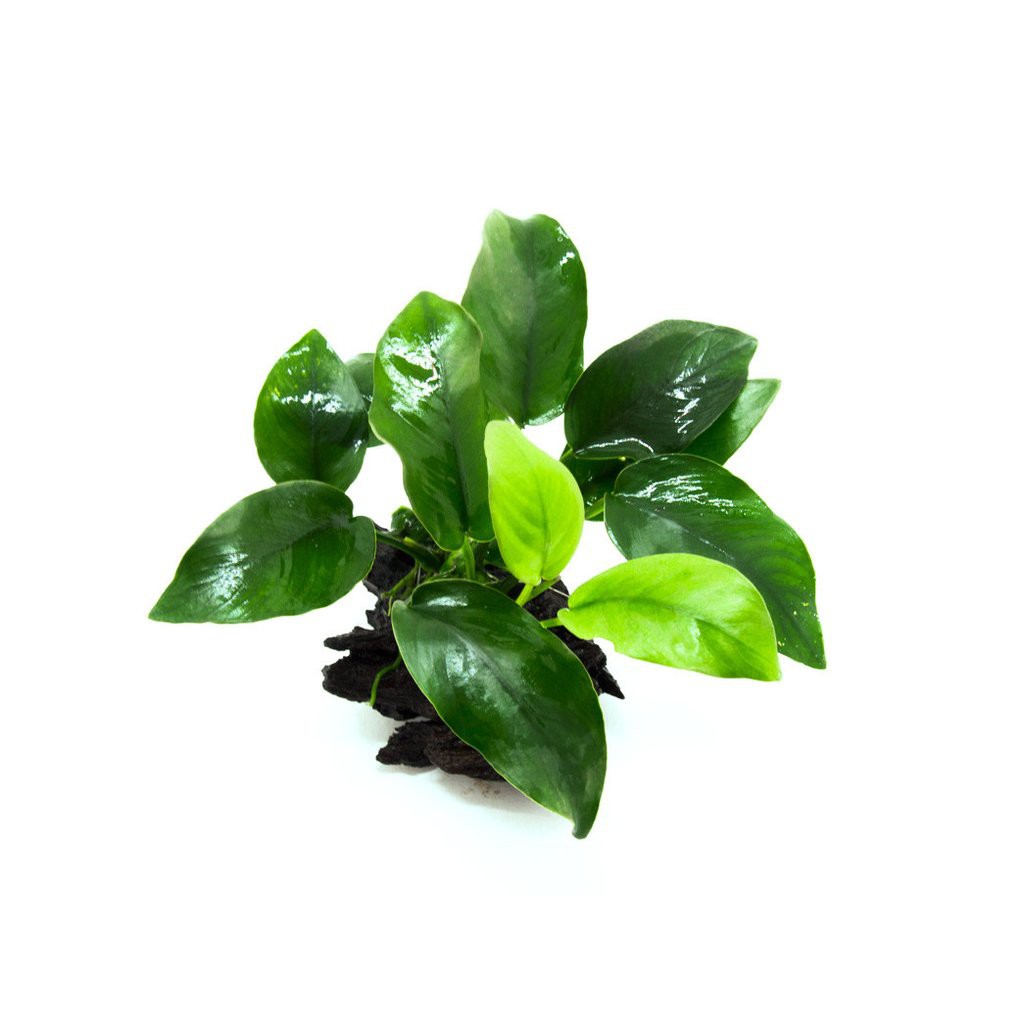
Anubias do not require carbon dioxide injection to survive. However, it does benefit them greatly. This plant also has a rhizome and root system which do not appreciate being buried.
Most of the time, you’ll find anubias plants to be attached to rocks or a piece of driftwood at your local fish store.
Temperature wise, keep them between 72°F to 82°F.
BUCEPHELANDRA
Bucephelandra is another aquarist favorite plant that it has its own cult! It comes in over 200 variations.
They grow best attached to driftwoods or rocks, such as they do in the wild. If you do plan to bury them, ensure to not cover its rhizome.
Bucephelandra can survive in a wide range of lighting, from low to high. HIgh or strong lighting will give them a more intense coloration. While they benefit greatly from carbon dioxide injection, it is not a requirement.
Bucephelandra will propagate by forming new baby plants along its rhizome. Temperature wise, keep them between 71°F to 82°F.
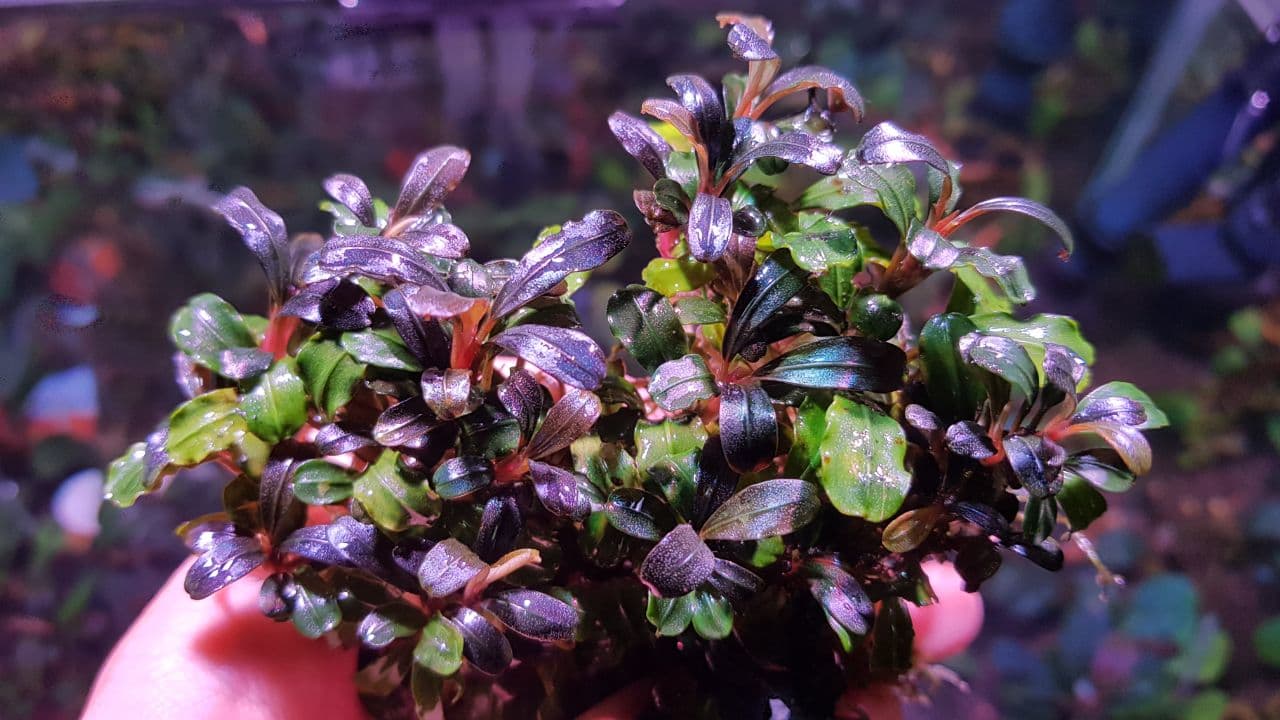
BOLBITIS HEUDELOTII
Bolbitis heudelotii or the African Water Fern do not appreciate being buried in substrate. It is important to not cover or bury the rhizome of the plant.
Bolbitis heudelotii absorbs its nutrients from the water column, instead of soil. In the wild, this plant is found in shaded areas with fast flowing water.
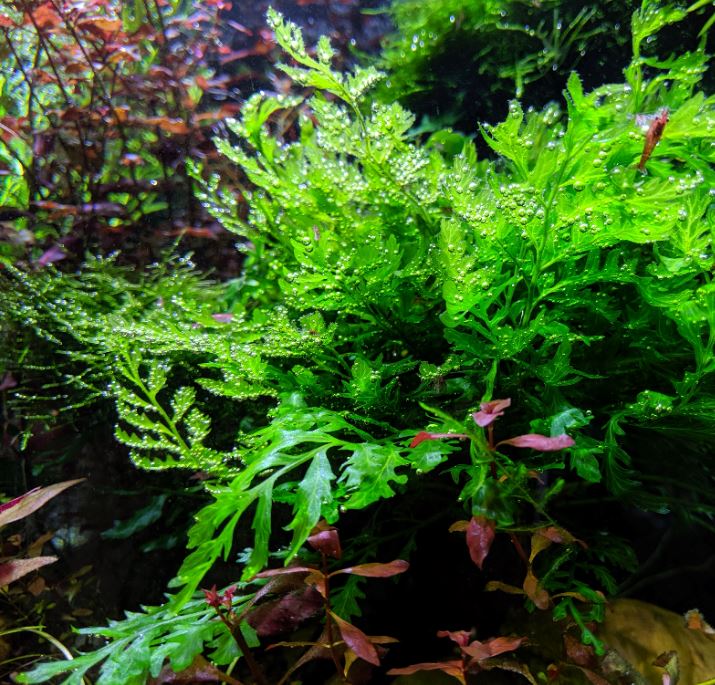
Lighting should be between low to moderate. Low lighting will result in darker green leaves while high lighting will give the leaves a light green coloration.
As for its growth rate, it is between moderate to slow. Propagation is done through rhizome division. Carbon dioxide injection enhances its growth. As for temperature, keep them between 68°F to 82.4°F.
HYGROPHILA PINNATIFIDA
Another fern-like plant on this list is the beautiful Hygrophila pinnatifida which compliments any planted tank! Some people do find it difficult to grow in their tank. However, this is due to the plant being quite sensitive during its conversion from emersed to submerged form. So, we highly recommend getting them in its submerged form from the get go!
They have reddish coloration at the bottom part of the leaves, which adds a splash of color to your tank! Growing them in a carbon dioxide injected tank is best.
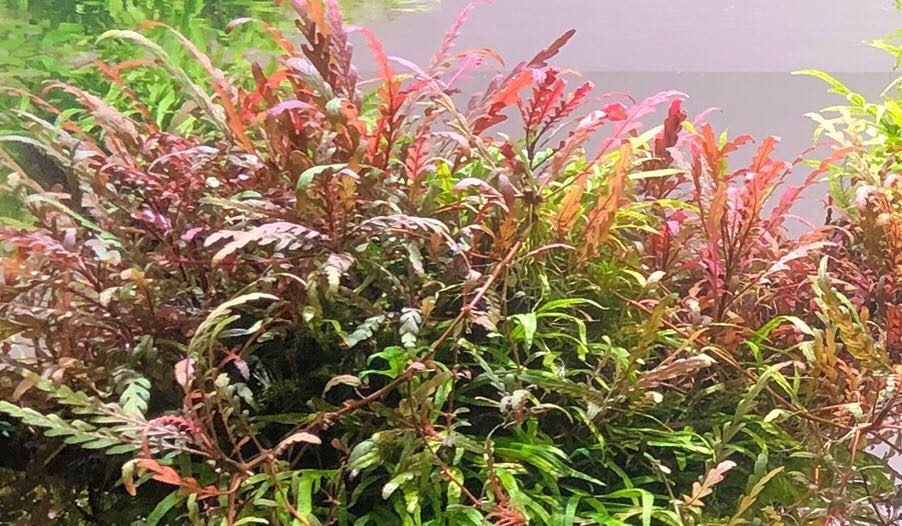
Hygrophila pinnatifida requires moderate to strong lighting. Intense lighting will give the plant a more brighter red coloration.
They have a medium or moderate growth rate. Hygrophila pinnatifida will send out runners, which then can be propagated from. They do grow big and may cover other plants, so regular trimming is recommended.
Temperature wise, keep them between 68°F to 83°F.
HYDROCOTYLE SP. AUSTRALIA
Hydrocotyle sp. Australia is a well-known carpeting plant and overall versatile plant. Its growth rate is rapid in a high nutrient, carbon dioxide injected tank. This plant can grow without a substrate. However, without adequate lighting and carbon dioxide injection, growing it might prove to be a bit difficult. They are also quite sensitive to temperature. Cooler temperature is definitely recommended.

If you do plan to grow them without a soil substrate, it is best to place them at a higher part of the tank. However, Hydrocotyle sp australia can grow in a wide range of lighting, anywhere from low to strong lighting. In strong light conditions, they will grow horizontally and densely whereas in low light conditions, they will grow loosely and vertically. Besides that, regular trimming is recommended as they tend to look “messy” without it and trimming is generally good to encourage new growths. Temperature wise, keep them anywhere between 72°F to 82°F. Nevertheless, it is best to keep them on the cooler side.
MOSS
Moss isn’t exactly a plant but they sure look like one! Moss care differs between species. Certain moss types do require higher care compared to others but generally, they’re pretty easy to keep! Some popular moss species are java moss, Christmas moss, Weeping Moss, Flame Moss and many more.
You can tie them to a piece of rock, driftwood or stainless steel mesh and watch them take over your tank! It also helps in giving a full and luscious aquarium look.

They do best in high light conditions and with carbon dioxide injection. Moss tends to grow better in fast flowing water as it helps in preventing any debris from being trapped in between their tiny “leaves”.
As for temperature, keep them between 68°F to 82°F. Cooler temperatures are recommended.
FLOATING PLANTS
Simply plop them in your tank and you’re good to go! Floating plants are helpful in diffusing the lights in your aquarium and fish love to play in their roots! However, too many floating plants in the tank may block out the lights for your submerged plants so please, do bear in mind. Floating plants do not require carbon dioxide injection as they get it directly from air.
- RED ROOT FLOATERS
As their name indicates, they have bright red roots! With proper conditions, their leaves will also turn into a reddish hue. Supplement them with nitrogen and iron fertilizer to help bring out that beautiful red.
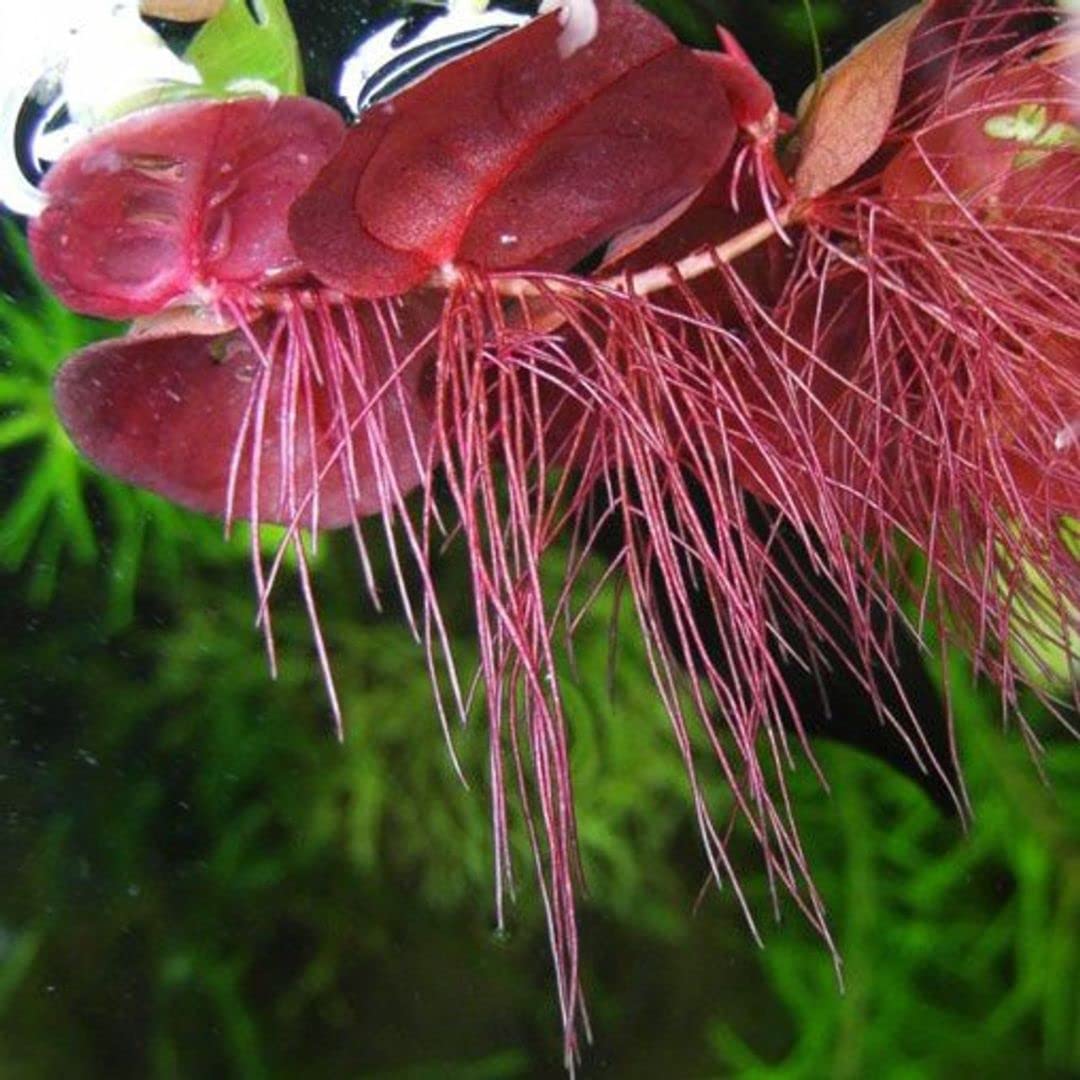
Red root floaters do not appreciate fast-flowing or vigorous surface agitation or flow. They do best in moderate to strong light conditions with available shades. Temperature wise, keep them between 65°F to 85°F.
- SALVINIA NATANS
Salvinia natans or also known as water butterfly wing are absolutely beautiful floating plants. They are much bigger in size as compared to red root floaters and do provide better shelter and breeding grounds for your aquarium inhabitants.
Unlike most floating plants, they do not grow very long roots, which is perfect if you’re looking for a more manageable plant.
They appreciate a gentle and calm flow with moderate to high lighting. As for temperature, keep them between 54°F to 86°F.

And there you go, a list of some soiless aquarium plants! There are plenty more amazing and unique aquarium plants out there but let’s save it for next time. May your water garden grow lush and green. Happy fishkeeping!
